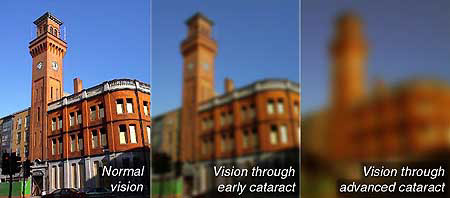The natural lens of the eye is located behind the pupil and the iris. When the lens gets cloudy, it is known as a cataract. Cataract is among the most common eyesight related problems around the world. In fact, according to the PBA, the number of Americans suffering from cataracts will reach 30 million in the next couple of years. The fact that cataracts are the leading cause of blindness in people aged 40 and over means you have to be aware of the signs and symptoms of the condition so you can get timely treatment.
The numbers clearly tell a story. The cases of cataracts reported around the world are more than those of diabetic retinopathy and macular degeneration combined. This clearly shows that the risk of cataracts is higher than any other eye condition and you have to be particularly careful about taking care of your eyes. In any case, it is recommended that you get regular eye checkups as you age. However, learning about the symptoms of cataracts can go a long way towards helping you get optimal treatment for the condition. Here is a look at some of the most common symptoms of cataracts:
- The initial symptoms of cataracts include cloudy vision. Your vision starts getting blurred, akin to viewing an Impressionist painting. If you are not sure about the cause of blurriness, it is a good idea to see an eye doctor without delay so that he/she can determine your risk of cataracts.
- You will develop increased sensitivity to bright lights and even sunlight. You might have a hard time driving at night because the glare from the headlights of the cars in front of you intensifies. This can further lead to your vision blurring and you might even experience double vision in one eye.
- Colors that once appeared clear and vivid to you might start fading when you view them. This is among the most obvious symptoms of cataracts. If you are watching TV and are unable to perceive the colors properly, you need to get an eye exam without delay.
- You may have to get your eyeglasses prescription changed on a regular basis if you have cataracts. This is a good thing because your eye doctor will be able to check your eyes for cataracts and diagnose them at an early stage.
- As mentioned above, your eyes will become more sensitive to lights if you have cataracts. There is also a chance that you start seeing halos around the lights. Even in that case, you should have your eyes checked right away.
- You might not be able to read properly, even in decent lighting. Requiring extra light for reading or performing other tasks at night could also indicate that you have cataracts.
Now that you are familiar with the common symptoms of cataracts, you should watch out for them and make sure you schedule an appointment with your optometrist the moment you spot any of these.




